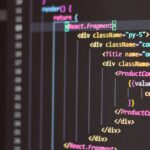Interpreters and compilers are both used to execute programs written in programming languages, but they differ in how they process and execute the code. Here are the key differences between interpreters and compilers: Overall, the choice between an interpreter and a compiler depends on factors such as performance requirements, development speed, platform portability, and the […]
What is Just-in-Time (JIT) compilation ?
Just-in-Time (JIT) compilation is a technique used by some programming languages and runtime environments to improve the performance of interpreted code. It combines the benefits of both interpretation and compilation by dynamically translating and optimizing parts of the code during runtime. In traditional interpretation, the source code is executed line by line, with each line […]
What is Interpreter in Programming Language?
An interpreter is a program or software component that directly executes instructions or statements written in a programming language without the need for prior compilation. It reads the source code line by line, converts it into machine code or an intermediate representation, and executes it immediately. When a program is run through an interpreter, the […]
What is Compilation in Programming Language?
In the context of programming languages, compilation refers to the process of translating source code written in a high-level programming language into a lower-level representation, typically machine code or bytecode, that can be executed directly by a computer. The compilation process involves several steps: Once the compilation process is complete, the resulting executable file or […]
What is Python and It’s Features ?
Python is a high-level, interpreted programming language known for its simplicity, readability, and versatility. Created by Guido van Rossum and first released in 1991, Python has become one of the most popular programming languages in the world. Key features of Python include: Python’s popularity can be attributed to its simplicity, versatility, and the vast number […]
Just-in-time (JIT) compilation, Compilers, and Interpreters: What is Difference ?
Just-in-time (JIT) compilation, compilers, and interpreters are different approaches to executing code in programming languages. Here’s a comparison of these three concepts: To summarize, JIT compilation is a technique that combines aspects of interpretation and compilation to dynamically optimize code during runtime. Compilers translate the entire code upfront for direct execution, while interpreters execute code […]
Understanding High-Level Programming Languages: Unlocking Simplicity and Productivity
In the world of computer programming, high-level programming languages play a vital role in simplifying the software development process. These languages enable programmers to write code at a higher level of abstraction, making it easier to express complex ideas and build powerful applications. In this blog post, we will delve into the concept of high-level […]
All Excel Functions and Formula
Excel Resource Link:https://www.linkedin.com/posts/kiran-p-bharambe-332336118_free-excel-exceltips-activity-7042700824292052992-U8fy
Array Functions in Excel
Array functions are an important aspect of Excel that data analysts and data scientists should also understand. Array functions are a group of functions in Excel that perform calculations on multiple cells in an array, and return an array of results. They are often used for complex calculations and analysis that cannot be easily done […]

